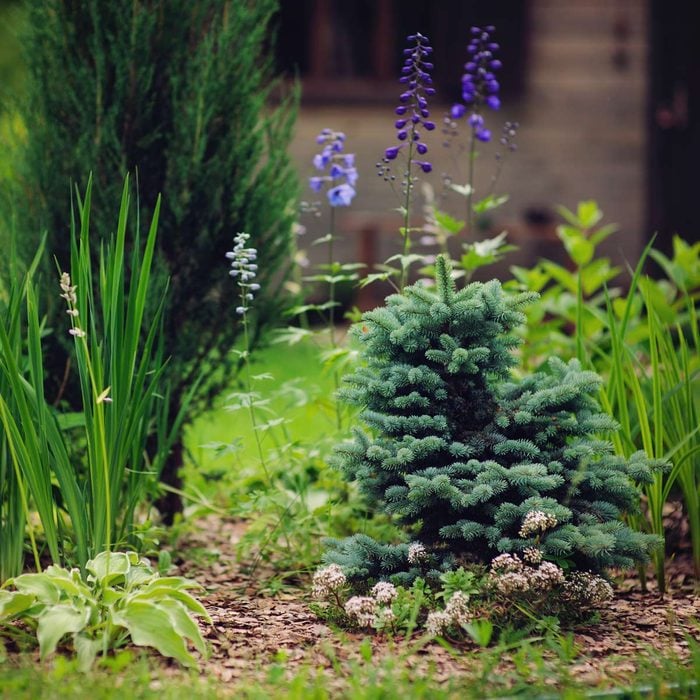
What Is a Dwarf Tree?
Dwarf trees are artificially made one-third to one-half the size of a normal or standard member of its species. In horticultural practice, the process of “dwarfing” can be accomplished through selective breeding, genetic engineering, restricting nutrients or hormones, and grafting selective portions of certain trees onto a different species.
Dwarf trees are highly sought after by those with limited yard or garden space, with several ornamental, fruiting, evergreen and deciduous dwarf trees available. Unfortunately, there are many misconceptions and little-known facts about these incredible trees. They include:
- Dwarf trees aren’t the same as bonsai trees. Bonsai is an art form that involves specialized pruning and training practices to create a miniature, artistic representation of the tree in nature.
- Almost all commercial apple orchards use dwarf or semi-dwarf apple trees to make picking and spraying easier.
- What some people consider as dwarf trees are actually semi-dwarf trees. Semi-dwarf trees grow to one-half to three-quarters the size of a standard tree of its species.
- Some dwarf trees are naturally occurring. Natural dwarfing results from adaptions to environmental stressors (like poor light and soil quality) where only small varieties of a tree can survive.
If you’re interested in incorporating a dwarf tree into your landscape, following are 10 unique and desirable dwarf trees.
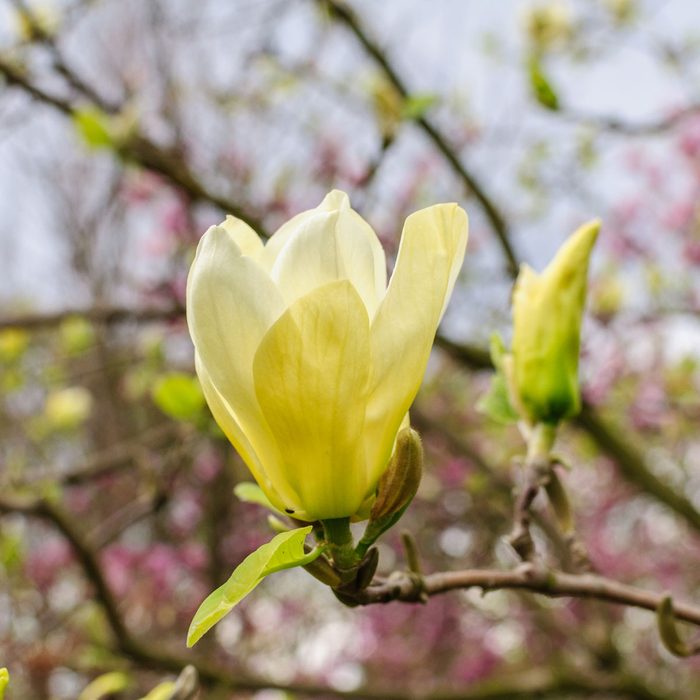
Magnolia ‘Butterflies’
Hundreds of magnolia tree varieties are notorious for their showstopping flowers, and the Magnolia ‘Butterflies’ is no exception. It derives its name from the yellow bowl-shaped flowers that resemble a butterfly when they’re in full bloom, from mid-March to April. Otherwise, the tree has large, pointy, dark-green foliage until left barren through winter.
‘Butterflies’ only grows between 10 and 20 feet tall and requires little maintenance or pruning. They thrive in USDA Plant Hardiness Zones 5 through 9, so are hardy down to -20 F.
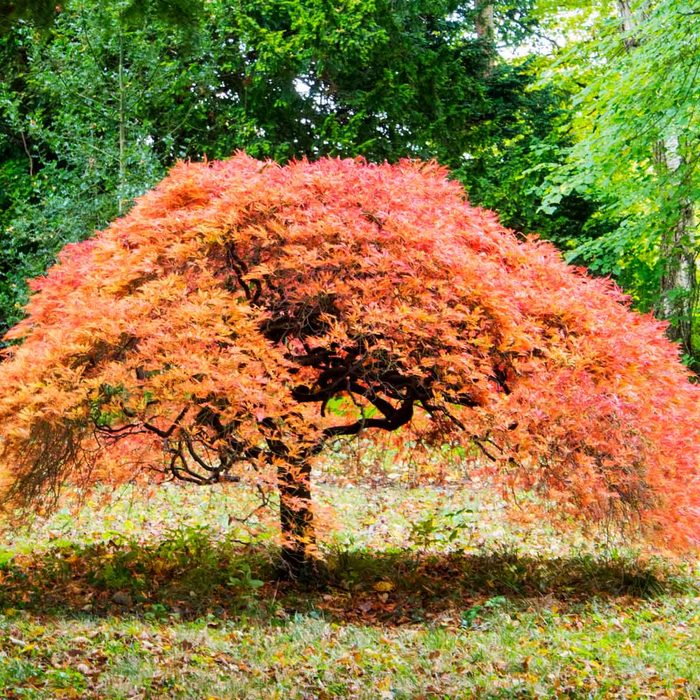
‘Akita Yatsubusa’ Japanese Maple
Popular in bonsai and rock gardens, the ‘Akita Yatsubusa’ Japanese maple has gorgeous foliage with a color-scheme that evolves throughout the year. Starting with a pinkish-red hue in spring, the leaves get progressively greener through the summer until culminating in an orange-red in the fall.
They only grow to about 2-1/2 feet tall, making them excellent aesthetic focal points in small gardens, yards or containers. Aside from their beauty, the ‘Akita Yatsubusa’ is one of the hardiest varieties of Japanese maple, thriving in Zones 5 through 9.
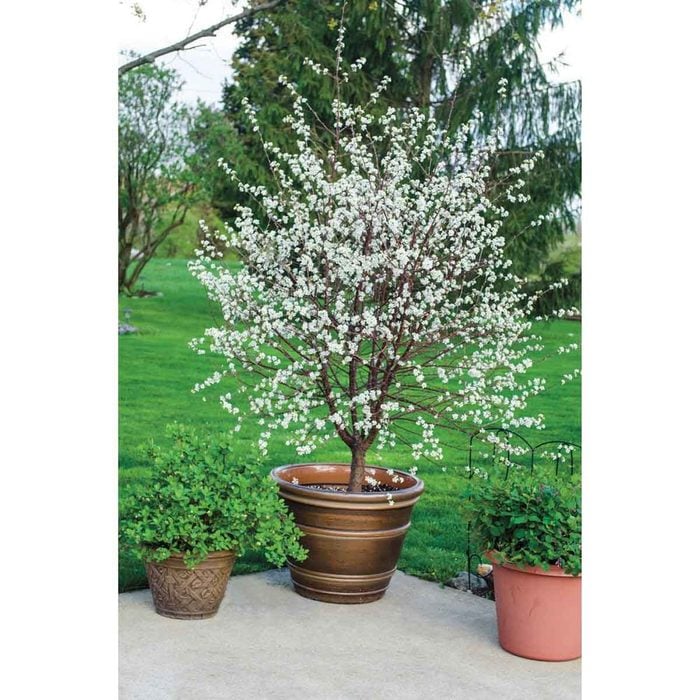
‘Romeo’ Cherry Tree
The ‘Romeo’ cherry tree only grows between six and eight feet tall and offers ornamental foliage, prolific fruit production and incredible cold-hardiness. It produces beautiful white and pink cherry blossoms during spring, and bright red fruit throughout the summer.
Despite its small stature, the Romeo cherry can produce up to 30 pounds of tart cherries each season! These dwarf trees are incredibly cold hardy, thriving in Zones 3 through 7.
The disadvantages? They’re prone to several diseases and pest infestations and may not tolerate warmer climates.
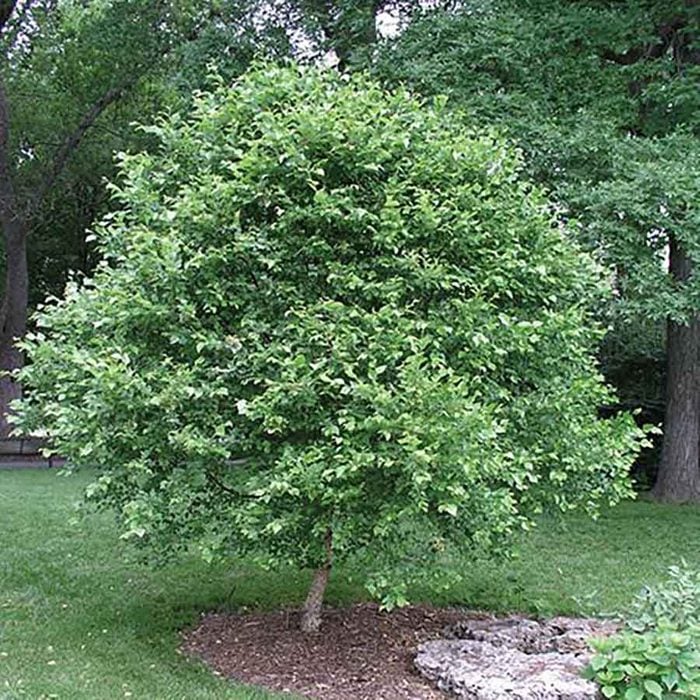
‘Little King’ River Birch
The ‘Little King’ river birch is a dwarf variety of Betula nigra river birch, and grows to only 10 to 12 feet tall. It typically develops a pyramidal crown structure in the first few years of growth until it matures into a more rounded structure.
The ‘Little King’ has diamond-shaped green leaves from spring through autumn, and eye-catching salmon- and white-colored bark through winter. Like its full-size peers, the ‘Little King’ is hardy in Zones 4 through 9 and is more drought- and heat-tolerant than other types of birch.
Note that these trees are prone to several insects and diseases, such as birch borer and birch dieback.
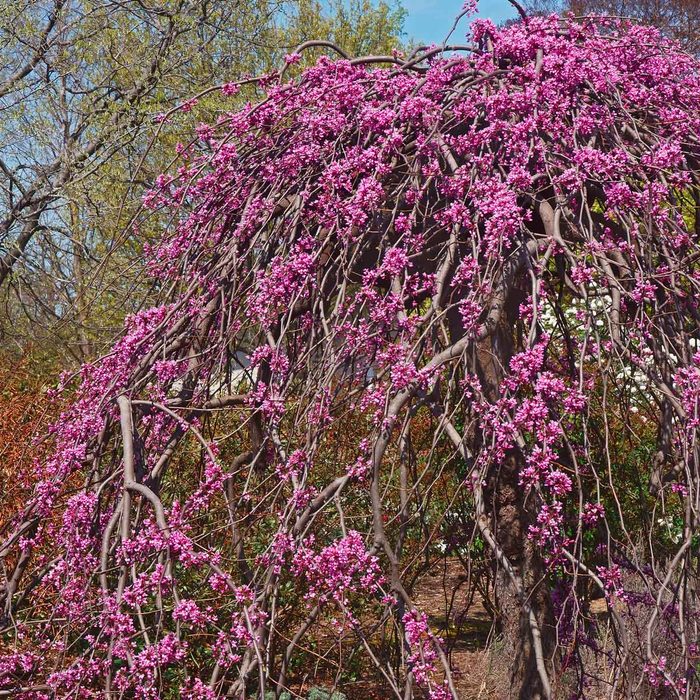
Lavender Twist Weeping Redbud
Common in the Southeastern U.S., the majestically weeping branches of the Lavender Twist weeping redbud thrive in Zones 5 through 9. They grow between five and 15 feet tall and offer ornamental clusters of small pink-purple flowers in the spring.
After the flowers fade (in three to four weeks), the branches produce attractive, bright-green foliage. These trees go into dormancy sooner than many other ornamental trees which makes them particularly cold-hardy. They are also resistant to deer.
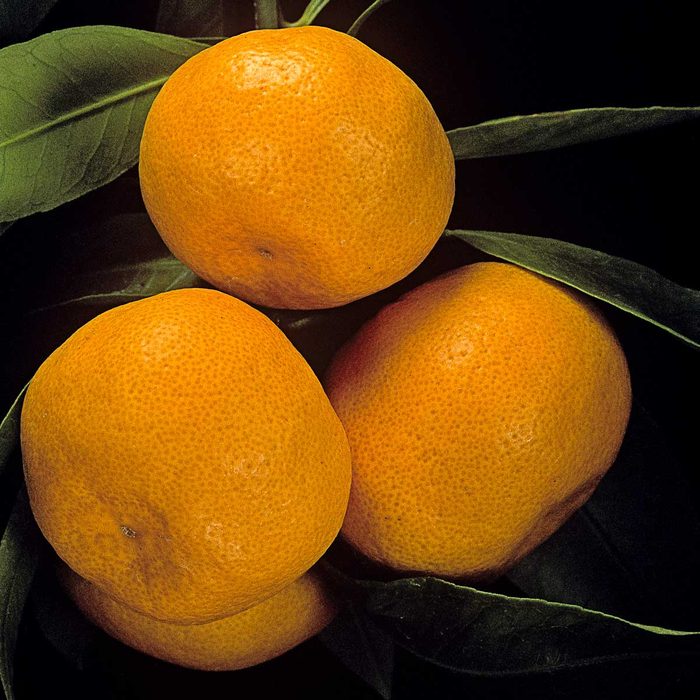
‘Owari’ Satsuma Mandarin Tree
While citrus trees aren’t normally considered small or frost-tolerant, the ‘Owari’ Satsuma mandarin tree offers both of these characteristics. It grows to eight feet tall and produces one of the sweetest mandarin fruits with an easily peeled skin. Attractive white flowers bloom in spring and attract various pollinators.
Although it’s one of the hardiest citrus trees, it can only withstand temperature drops to 12 F. It thrives in Zones 8 through 11.
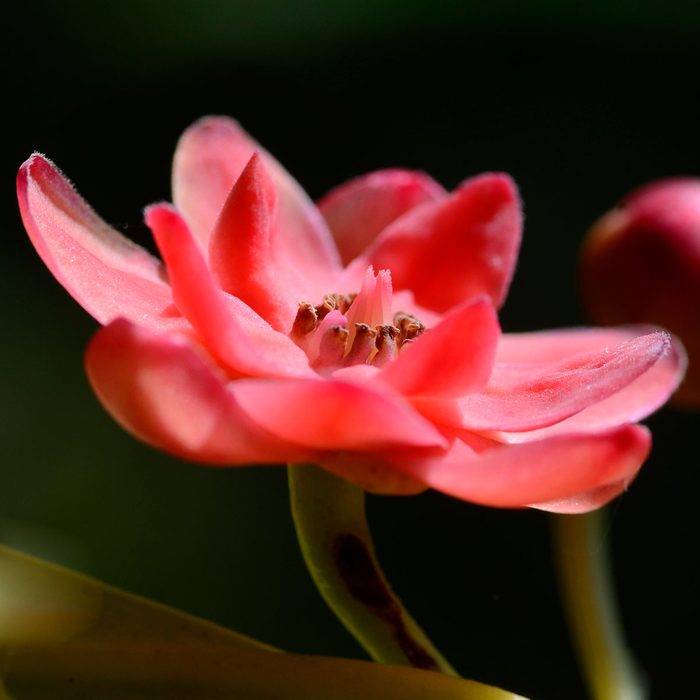
Chinese Anise
Also called ‘Henry anise,’ the Chinese anise tree grows between six to eight feet tall with a compact, pyramidal form. It received its name because its dark-, shiny-green leaves emit an anise-like fragrance when crushed. The Chinese anise creates red and pink flowers in late spring that subside around May to leave just the evergreen leaves year-round.
The Chinese anise tree only thrives in Zones 7 through 10, so isn’t suitable for colder climates.
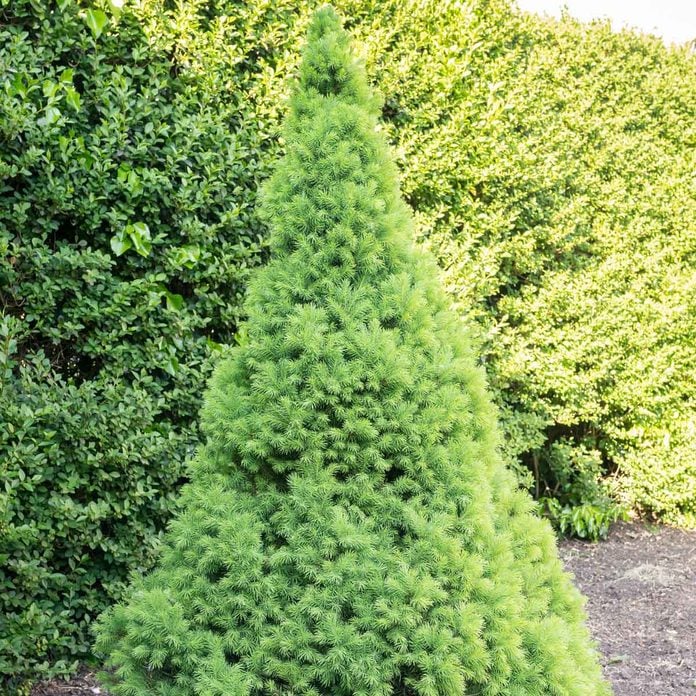
‘Blue Wonder’ Spruce
The ‘Blue Wonder’ spruce features blue-gray foliage — unlike the green Picea glauca ‘Conica’ pictured above — in a dense conical structure. This evergreen spruce provides a unique year-round beauty while only growing to six feet tall.
It’s incredibly hardy, thriving in Zones 3 through 7, and also drought-tolerant and deer-resistant. It can be used as an ornamental focal point in landscapes, and act as a privacy screen or natural windbreak.
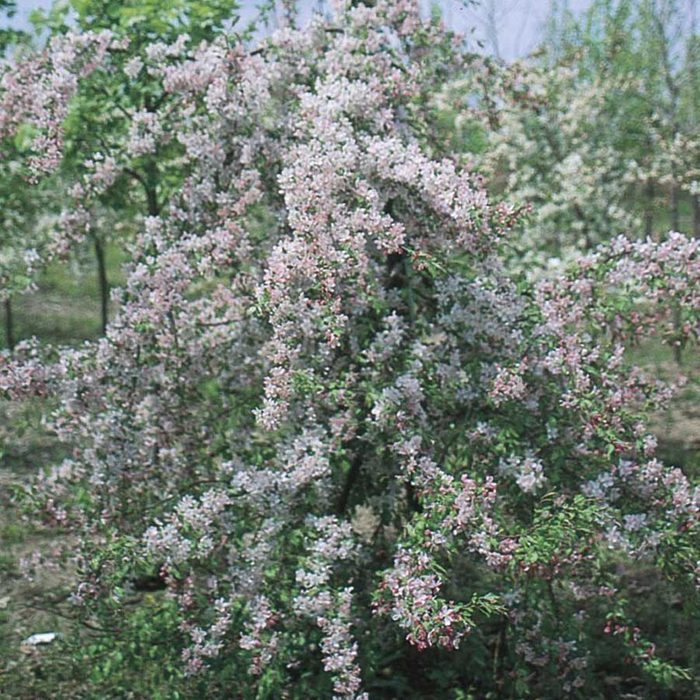
‘Louisa’ Crabapple
The ‘Louisa’ crabapple tree grows to just 15 feet tall, but produces an abundance of delicious apples in the fall. Showy and fragrant pink flowers form in mid-spring, and an elegant weeping branch structure can form if it’s left unpruned.
The ‘Louisa’ crabapple is hardy in Zones 4 through 8, and continues producing fruit well into winter. It’s also highly resistant to plant diseases that commonly affect crabapples, such as crabapple rust, fire blight and powdery mildew.
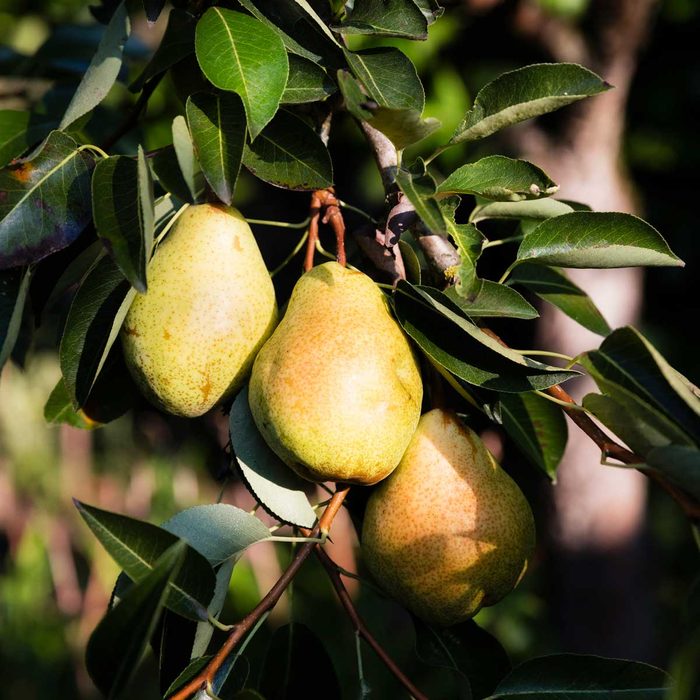
Williams Pear
Considered America’s favorite pear, the Williams pear (or Bartlett pear) is hardy and a prolific fruit producer. It begins fruit production much earlier in its development than other pears, with harvestable fruit after five to seven years of growth. Aside from offering edible fruit, this tree forms stunning white flowers in early spring. It’s hardy in Zones 4 through 8 and grows to 20 feet tall.
